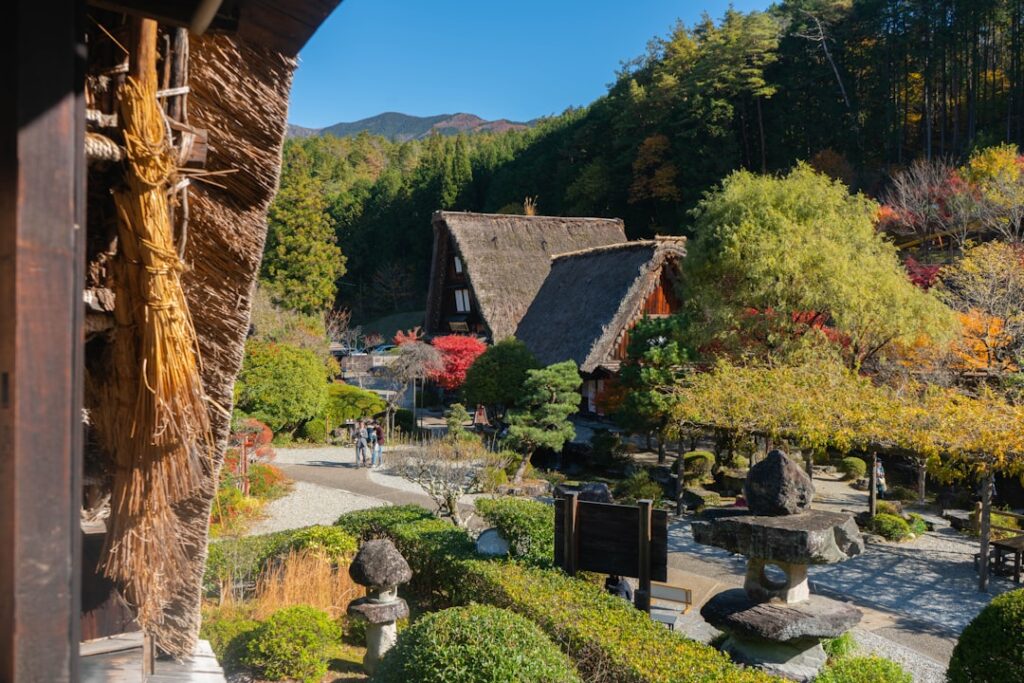The traditional Japanese bathroom, or ofuro, is a place of relaxation and cleansing. It is a space where one can escape from the stresses of daily life and connect with nature. The ofuro typically consists of a deep soaking tub, a shower area, and a separate area for washing and grooming. The design of the ofuro is often influenced by the principles of feng shui, with an emphasis on creating a harmonious and balanced environment. The use of natural materials such as wood and stone is common in traditional Japanese bathrooms, as they are believed to promote a sense of tranquility and connection to the natural world.
In addition to its functional aspects, the ofuro also holds cultural and spiritual significance in Japanese society. Bathing is seen as a ritual that cleanses both the body and the soul, and it is often considered a communal activity that brings families together. The ofuro is also a place for quiet contemplation and meditation, and it is not uncommon for Japanese people to spend hours soaking in the tub, reflecting on their thoughts and feelings. Overall, the traditional Japanese bathroom is a space that is deeply rooted in tradition and spirituality, and it serves as a sanctuary for both physical and mental well-being.
Key Takeaways
- The traditional Japanese bathroom emphasizes simplicity and functionality, with separate areas for washing and soaking.
- Minimalist design and natural materials, such as wood and stone, are key elements in Japanese bathroom design, creating a calming and serene atmosphere.
- Ritual and relaxation are important aspects of Japanese bathing culture, with a focus on mindfulness and self-care.
- Japanese bathrooms often integrate nature into indoor spaces through features like garden views and natural light, promoting a connection to the outdoors.
- While technology is present in Japanese bathrooms, it is often discreet and used to enhance the bathing experience without overwhelming the space.
- Personalization and customization are valued in Japanese bathroom design, allowing individuals to create a space that reflects their unique preferences and needs.
- The future of Japanese bathroom design may involve a balance of tradition and innovation, with a continued emphasis on creating a tranquil and rejuvenating bathing experience.
Minimalist Design and Natural Materials
Japanese bathroom design is characterized by its minimalist aesthetic and use of natural materials. The concept of wabi-sabi, which celebrates the beauty of imperfection and impermanence, is often reflected in the design of Japanese bathrooms. This is evident in the use of simple, clean lines, and the incorporation of natural elements such as wood, bamboo, and stone. The emphasis on natural materials not only creates a sense of harmony and tranquility but also reflects the Japanese reverence for nature.
In addition to its aesthetic appeal, the use of natural materials in Japanese bathrooms also serves practical purposes. Wood, for example, is known for its ability to absorb moisture and regulate humidity, making it an ideal choice for the construction of soaking tubs and shower areas. Bamboo is another commonly used material in Japanese bathrooms, prized for its strength, flexibility, and sustainability. Overall, the minimalist design and use of natural materials in Japanese bathrooms create a serene and timeless environment that promotes relaxation and well-being.
The Importance of Ritual and Relaxation
In Japanese culture, bathing is not just a daily chore but a ritual that holds deep cultural significance. The act of bathing is seen as a way to cleanse both the body and the mind, and it is often accompanied by a sense of mindfulness and relaxation. The traditional Japanese bathroom is designed to facilitate this ritual, with its deep soaking tubs, gentle lighting, and natural materials creating an atmosphere of tranquility and serenity.
The ritual of bathing in Japan often involves a specific sequence of actions, such as washing before entering the tub and soaking for an extended period of time. This process is seen as a way to purify the body and release tension, promoting physical and mental well-being. In addition to its cleansing properties, the act of bathing is also considered a communal activity that brings families together. It is not uncommon for multiple generations to share the same bathwater, fostering a sense of closeness and connection.
Integration of Nature and Indoor Spaces
| Metrics | Data |
|---|---|
| Percentage of indoor plants | 30% |
| Natural light exposure | 6 hours per day |
| Indoor air quality index | 80 (good) |
| Number of biophilic design elements | 15 |
Japanese bathroom design often seeks to integrate nature into indoor spaces, blurring the boundaries between the inside and outside. This can be seen in the use of natural materials such as wood and stone, as well as in the incorporation of elements such as indoor gardens or views of outdoor landscapes. The goal is to create a sense of harmony with the natural world, promoting relaxation and well-being.
One common feature in Japanese bathrooms is the use of large windows or skylights to bring in natural light and provide views of the surrounding environment. This not only creates a feeling of openness but also allows for a connection to nature while bathing. In addition, indoor gardens or water features are often incorporated into the design of Japanese bathrooms, further blurring the distinction between indoor and outdoor spaces. Overall, the integration of nature into Japanese bathroom design serves to create a sense of tranquility and connection to the natural world.
The Role of Technology in Japanese Bathrooms
While traditional Japanese bathrooms are known for their emphasis on natural materials and minimalist design, modern technology has also begun to play a role in shaping the contemporary Japanese bathroom experience. One example of this is the use of advanced heating systems for soaking tubs, which allow for precise temperature control and energy efficiency. Another technological innovation in Japanese bathrooms is the use of smart toilets, which feature functions such as heated seats, bidet washlets, and automatic lid opening/closing.
In addition to these functional advancements, technology has also been used to enhance the overall bathing experience in Japanese bathrooms. For example, some modern Japanese bathrooms are equipped with sound systems that allow users to listen to music or nature sounds while bathing. Lighting systems that can be adjusted to create different moods or simulate natural sunlight are also becoming more common. Overall, while traditional elements such as natural materials and minimalist design continue to be important in Japanese bathrooms, technology has begun to play an increasingly significant role in shaping the modern bathing experience.
Personalization and Customization

In recent years, there has been a growing trend towards personalization and customization in Japanese bathroom design. This can be seen in the increasing popularity of custom-built soaking tubs, which are tailored to fit the specific needs and preferences of individual users. These custom tubs may feature unique shapes, sizes, or materials, allowing for a truly personalized bathing experience.
Another aspect of personalization in Japanese bathrooms is the use of custom lighting and sound systems. Users can now customize their bathing environment by adjusting the color and intensity of lighting or choosing specific music or sounds to accompany their bathing experience. In addition, some modern Japanese bathrooms are equipped with aromatherapy systems that allow users to infuse their bathwater with scents such as lavender or eucalyptus.
Overall, the trend towards personalization and customization in Japanese bathroom design reflects a growing desire for individualized experiences that cater to specific preferences and needs.
The Future of Japanese Bathroom Design
As we look towards the future, it is likely that Japanese bathroom design will continue to evolve while maintaining its core principles of simplicity, harmony, and connection to nature. With advancements in technology and an increasing focus on sustainability, we can expect to see more innovative solutions for energy-efficient heating systems, water conservation, and eco-friendly materials.
In addition, there may be a greater emphasis on creating multi-functional spaces that can adapt to different needs throughout the day. For example, some modern Japanese bathrooms are designed to serve as both a traditional bathing space and a private spa or wellness retreat. This trend reflects a growing interest in holistic well-being and self-care practices.
Overall, while traditional elements such as natural materials and minimalist design will continue to be important in Japanese bathroom design, we can expect to see an increasing integration of technology, personalization, and sustainability in shaping the future of this timeless tradition.
If you’re interested in learning more about Japanese bathrooms, you should check out this article on careerpulse.net. It provides a fascinating insight into the unique features and design elements of Japanese bathrooms, including their emphasis on relaxation and cleanliness. You’ll discover how Japanese bathrooms have evolved over time and the cultural significance they hold in Japanese society. It’s a must-read for anyone intrigued by the innovative and luxurious aspects of Japanese bathroom design.
FAQs
What are the key features of a Japanese bathroom?
Japanese bathrooms typically have a separate area for the bathtub and shower, a toilet with advanced features such as bidet functions, and a sink area. They also often have heated floors and ventilation systems to prevent mold and mildew.
What is the purpose of the separate bathtub and shower area in a Japanese bathroom?
The separate areas allow for more efficient use of space and also enable multiple people to use the bathroom at the same time. It also helps in keeping the rest of the bathroom dry while someone is using the shower.
What are some common advanced features of Japanese toilets?
Japanese toilets often have features such as bidet functions, heated seats, automatic flushing, and air deodorizers. Some models even have built-in speakers for playing music or ambient sounds.
Why do Japanese bathrooms have heated floors?
Heated floors, known as “kotatsu,” are common in Japanese bathrooms to provide comfort during the colder months. The heated floors also help in drying the bathroom quickly after use.
How do Japanese bathrooms incorporate ventilation systems?
Japanese bathrooms often have powerful ventilation fans to remove excess moisture and prevent mold and mildew growth. Some bathrooms also have windows or skylights for natural ventilation.


